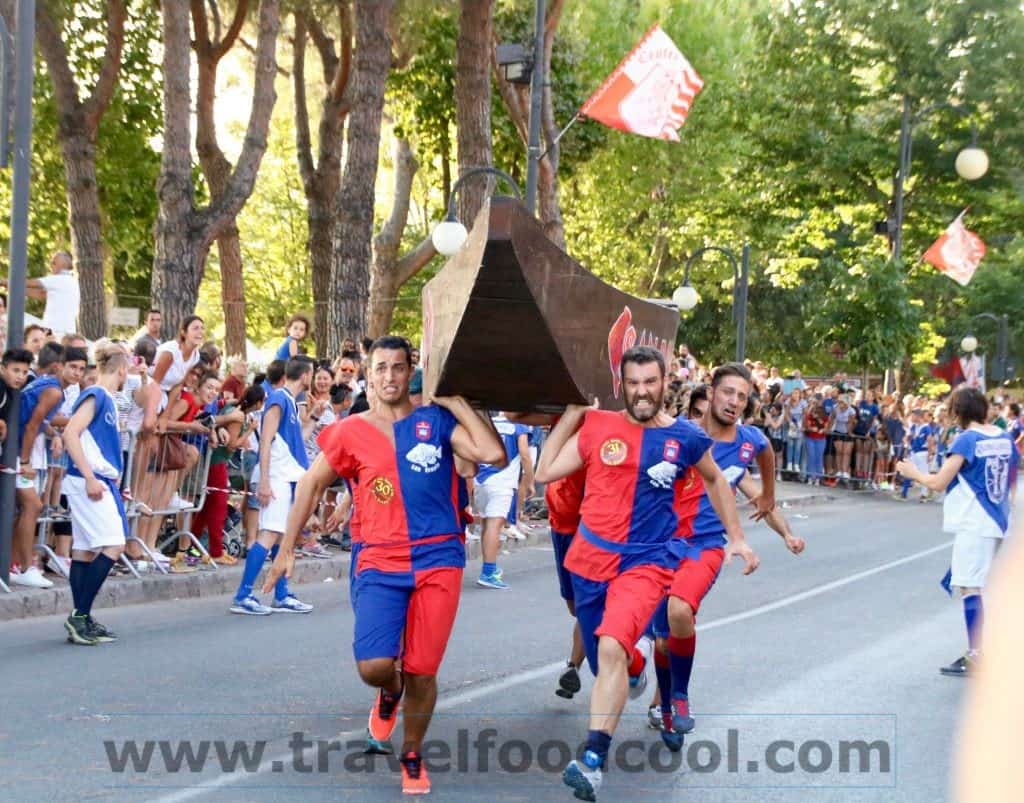
If you were in Italy yesterday, Sunday, July 30, you would have seen an unusual site on Lago Trasimeno.
Lago Trasimeno is the fourth largest lake in Italy. Although it is large, it is a shallow lake which makes it ideal for swimming and boating. From the house, we have a lovely view of the lake, our nearest big town, Castiglione del Lago, and the other little towns located around Lago Trasimeno. While the lake gets its fair share of summer action, on the last Sunday in July, it is teaming with boats and people furiously rowing across the lake. Why? Passignano is hosting the annual Palio delle Barche!
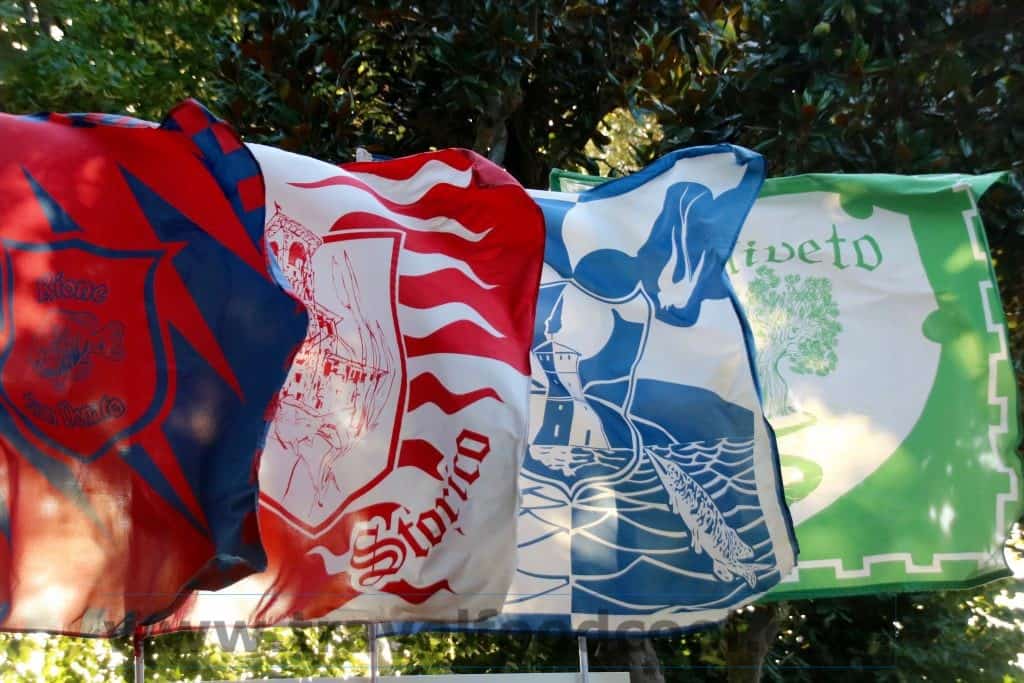
A few years after Columbus set sail to discover the new world, boats were playing a big role in a famous Umbrian battle. The Palio delle Barche pays tribute to the bloody battle which occurred in 1495 between the Baglioni and Oddi families. The battle was so intense that, after a serious attack from the Baglioni and Della Corgna, the small army of the Oddi family had to flee Passignano. The army loaded boats onto the shoulders of their men and ran from the castle to Lago Trasimeno.
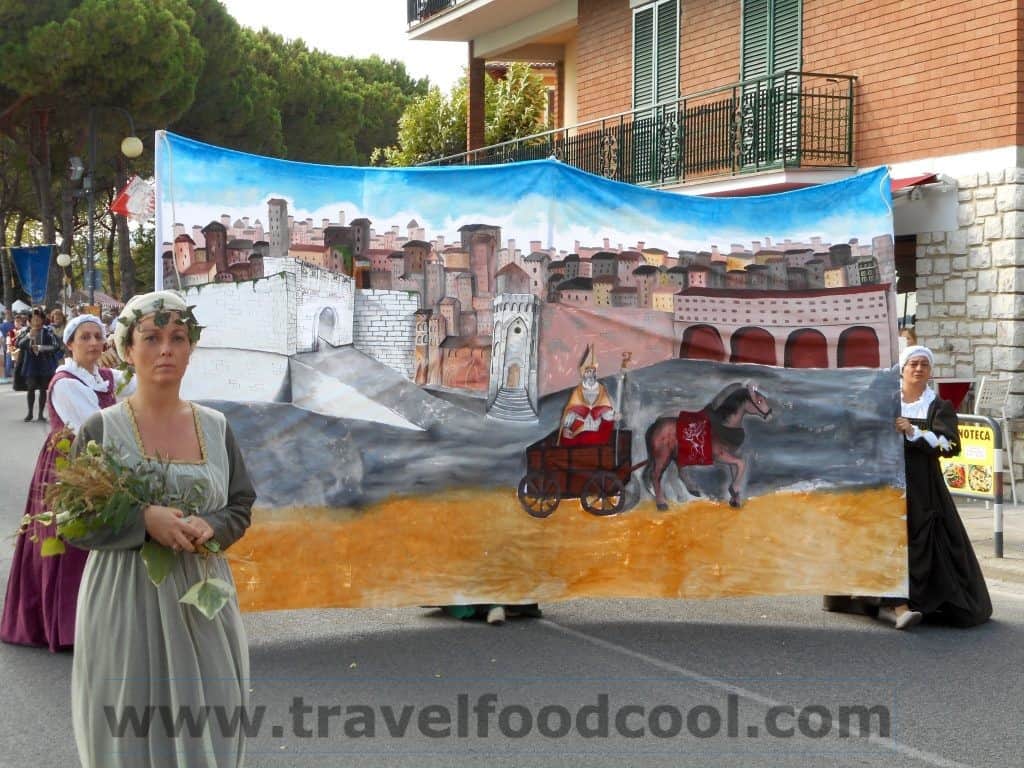
To commemorate the battle, on the last Sunday of every July, the four Rioni (districts or contrade) of the town, Rione Centro Storico, Rione Centro Due, Rione Oliveto and Rione San Donato, challenge each other in a three-stage competition. The week-long festivities start the week preceding the last Sunday in July. From Monday to Thursday, people can see the trial race of each Rione. On the Friday prior, there is a general trial race. On the day before, the Saturday, the head of the hosting Rione meets with the heads of the three other Rioni for the “Lancio delle Sfida” (challenge declaration). The hosting Rione challenges the others to a new race.
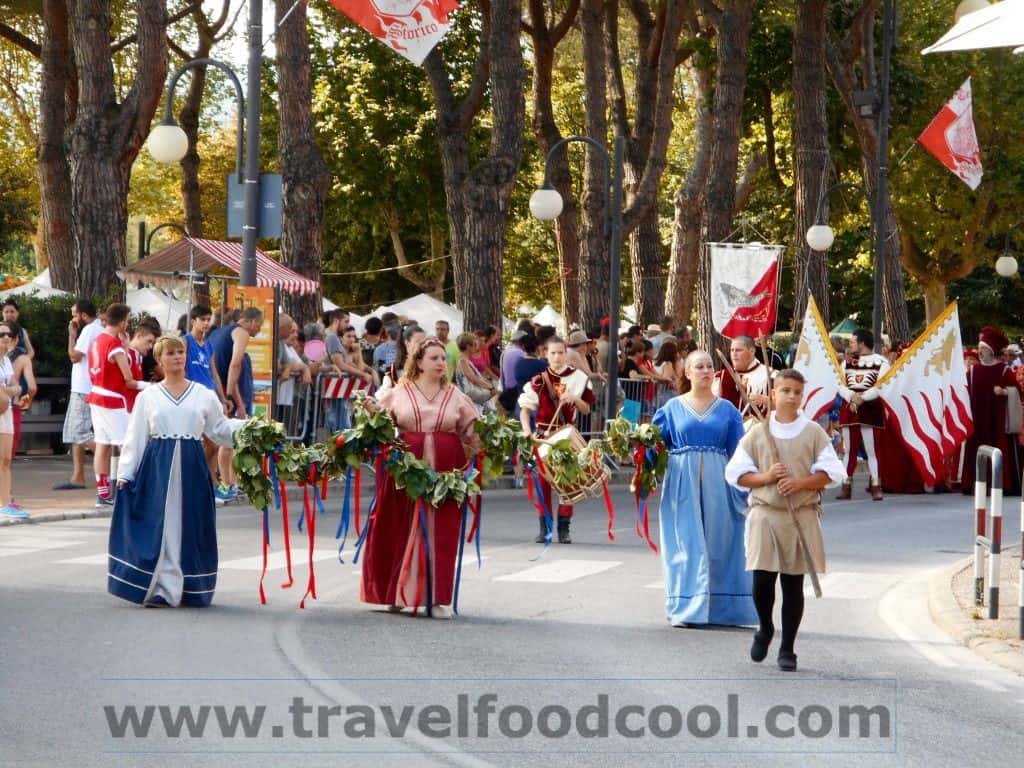
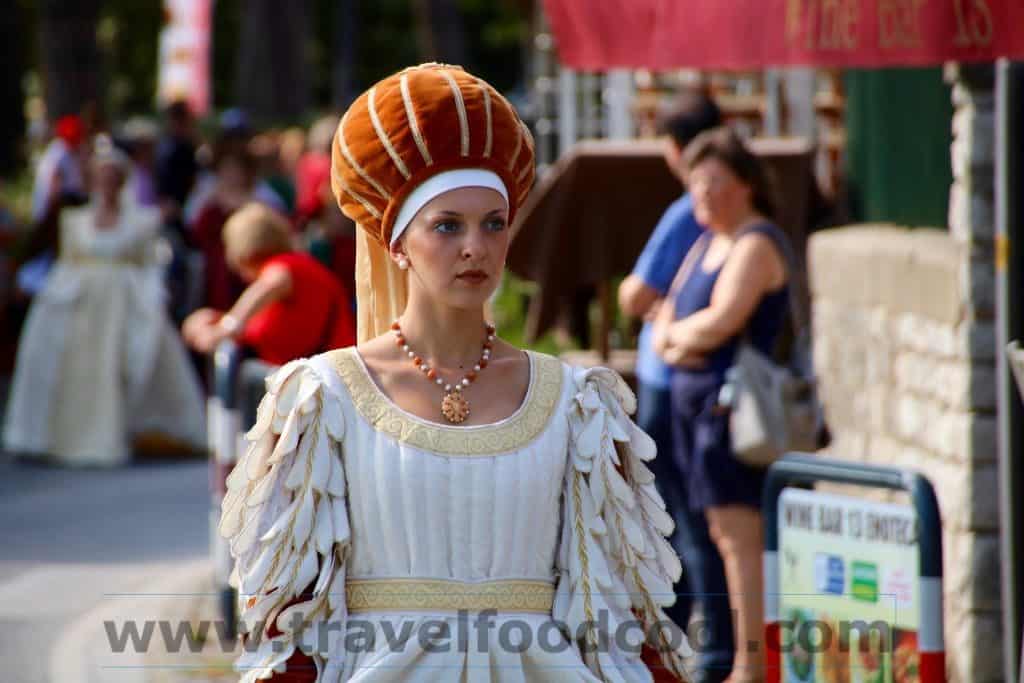
The lead-up to the start of the race is a parade with people dressed in historic clothes. You will see knights, drummers and flag bearers. Each Rione has their own “royalty” that march behind their flags.
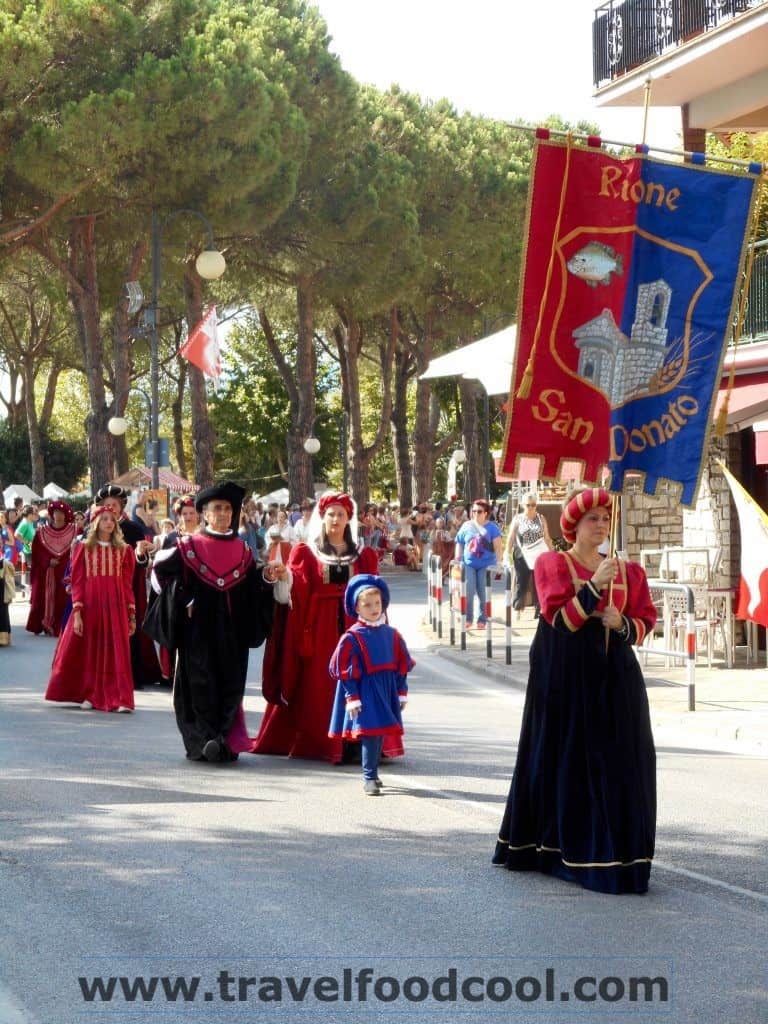
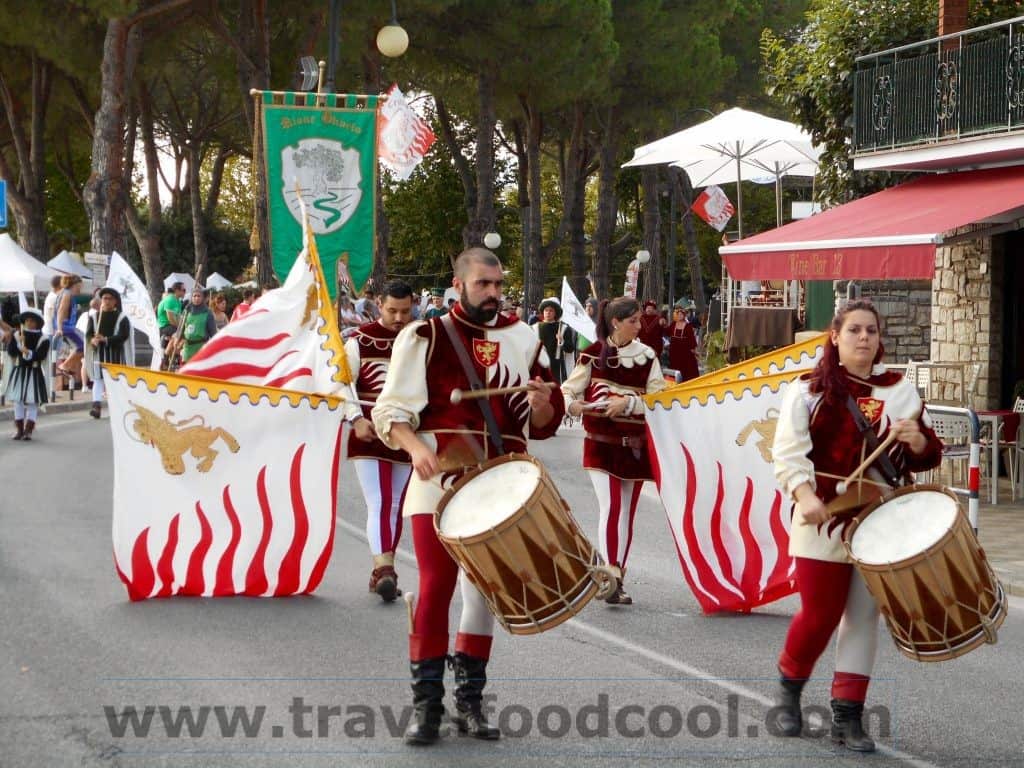
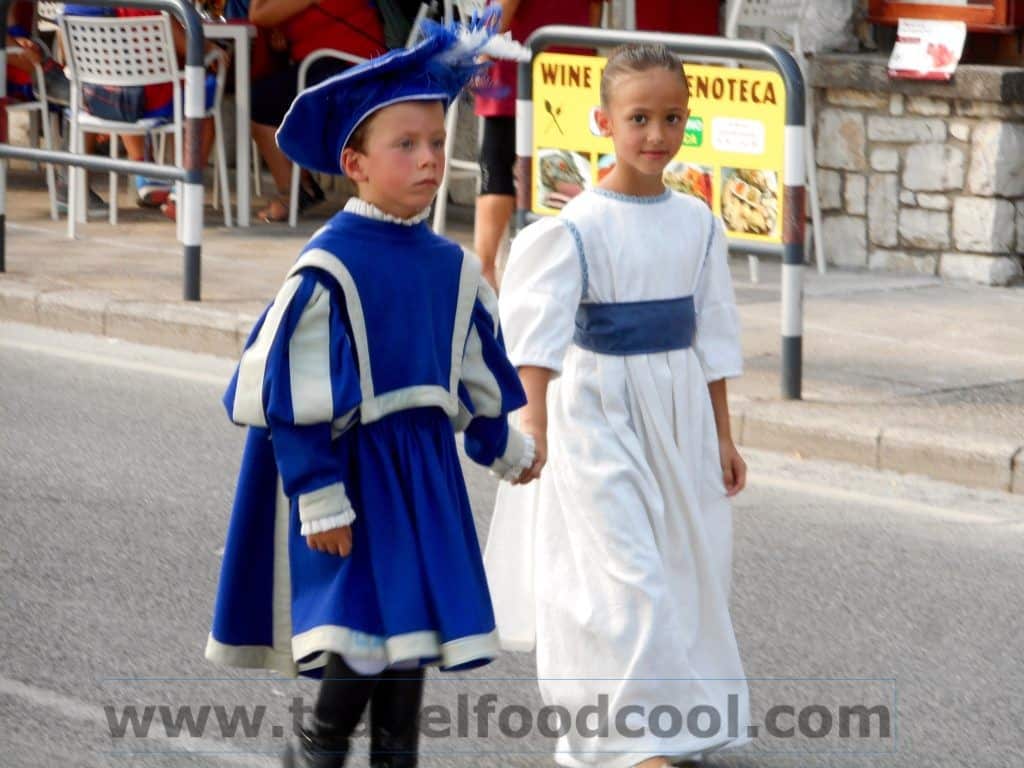
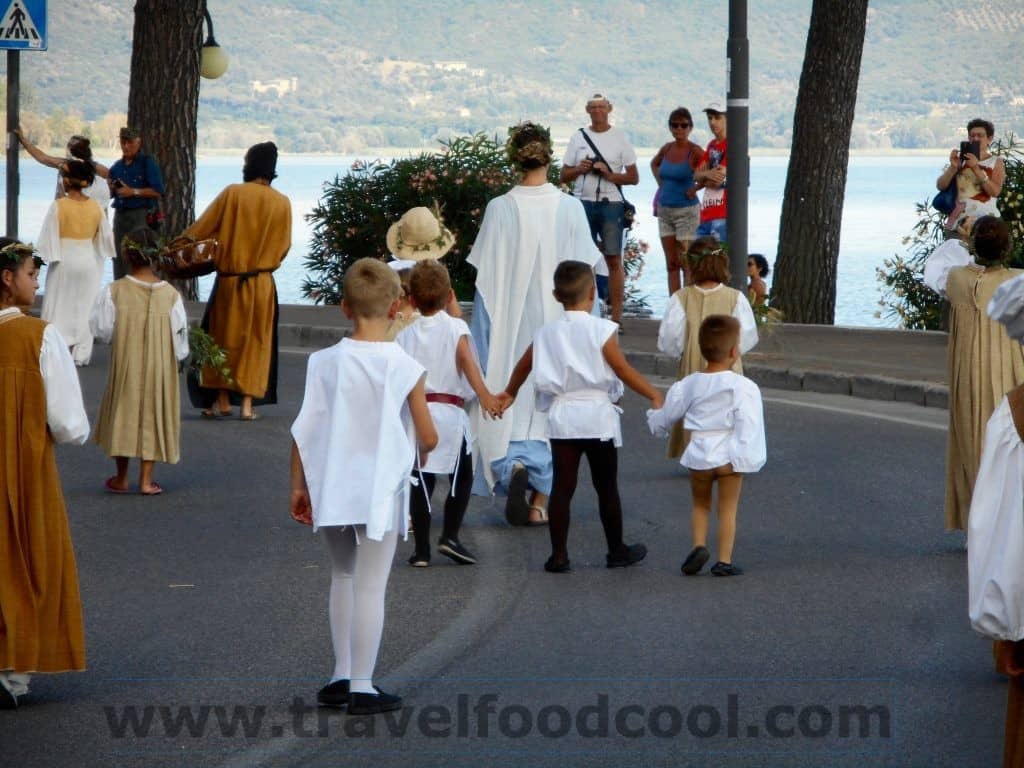
The race itself is three stages.
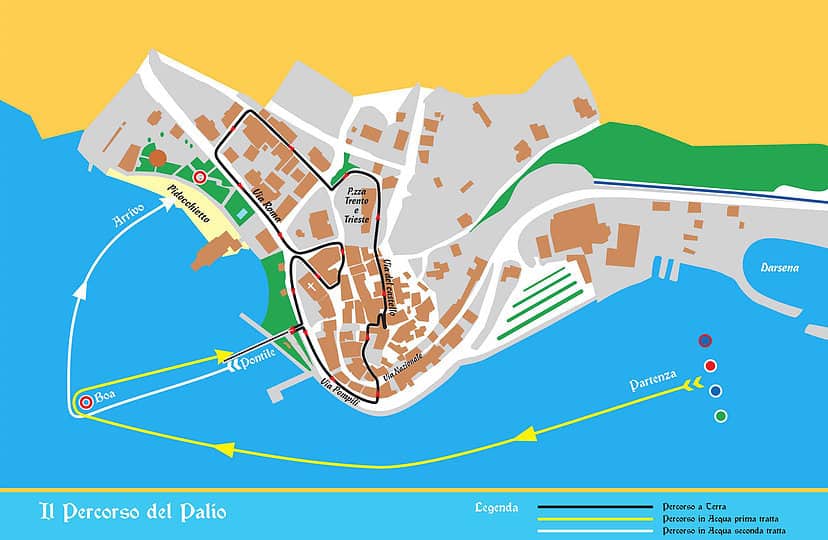
In the first stage (yellow on the map), there is a race by boat from the lake to the town pier which is approximately 1 km. This stage has a team of three people in each boat – two that row and one (usually, but not always female) that is the flag bearer.
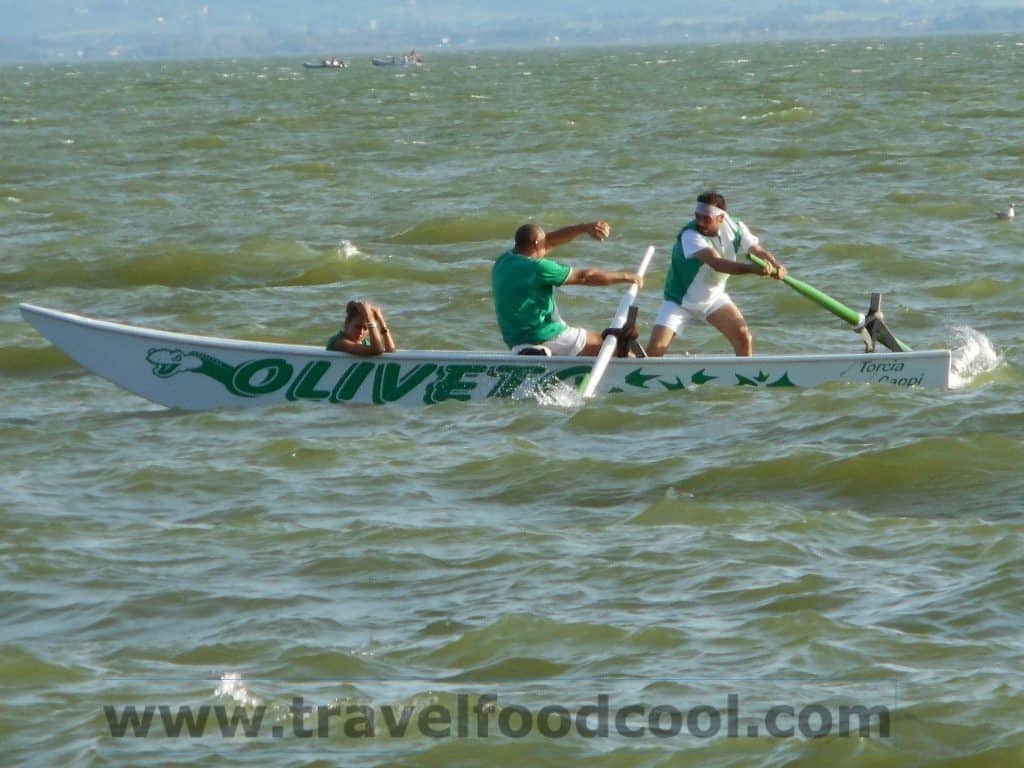
The rowers first have to row out to the starting point and once the race begins, they row to the pier.
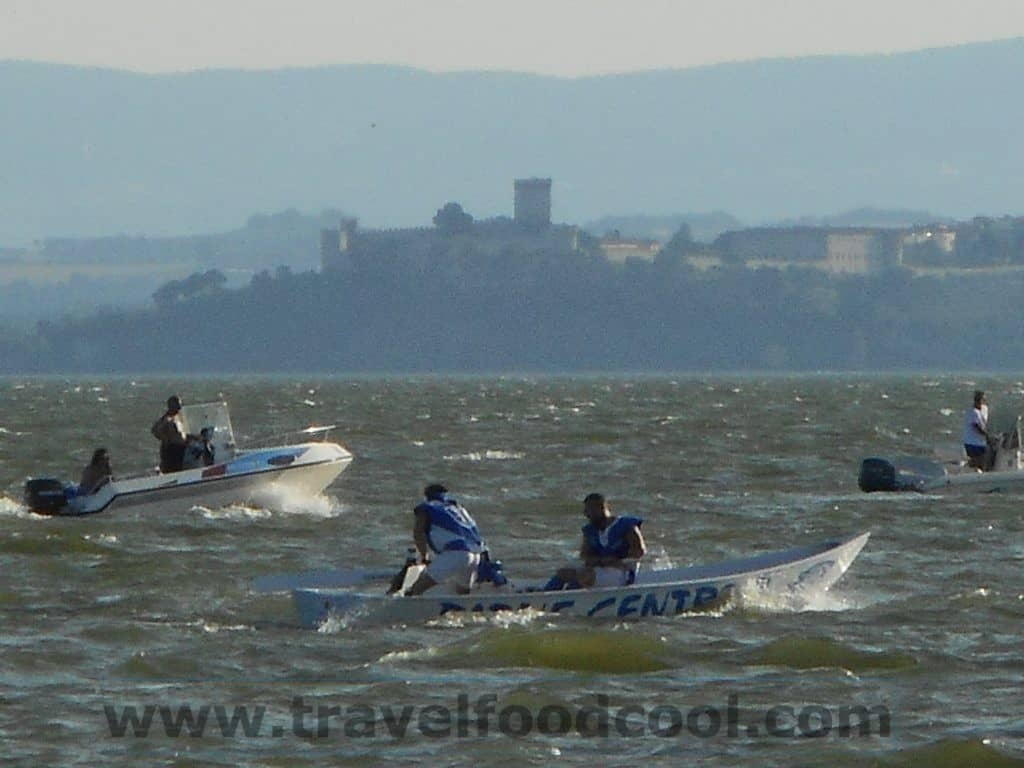
Once at the pier, the flag bearer leaps out of the boat and runs to the next stage where members of the Rione are waiting to carry the wooden boats.
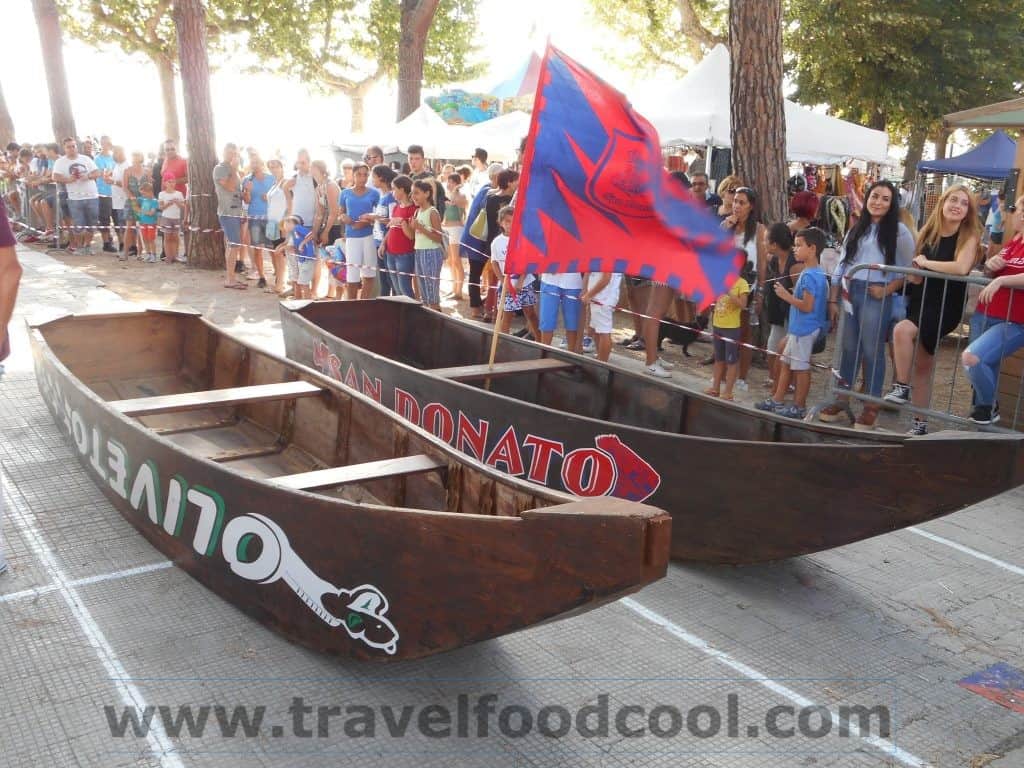
One the flag bearer has “tagged” them, the seven-person Rione representatives hoist the wooden boat upon their shoulders and race with them through the historical centre. This is no easy feat as, like all medieval towns, the streets are full of twists and turns as well as stairs! As you can imagine, this is accomplished by various team members strategically placed throughout the town to help. (Black route on map.)

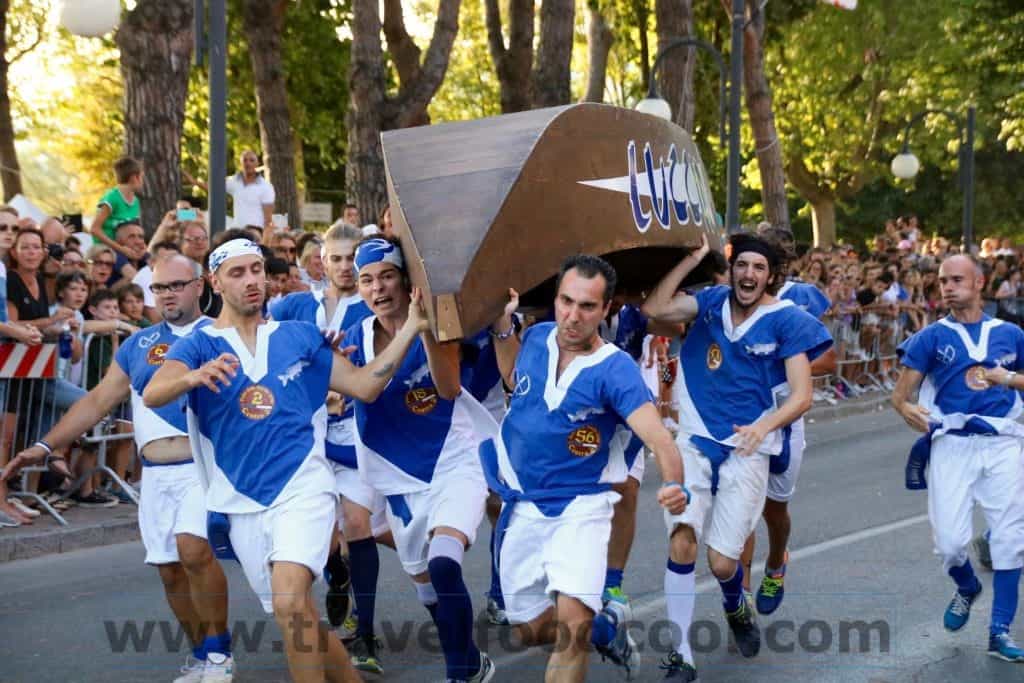
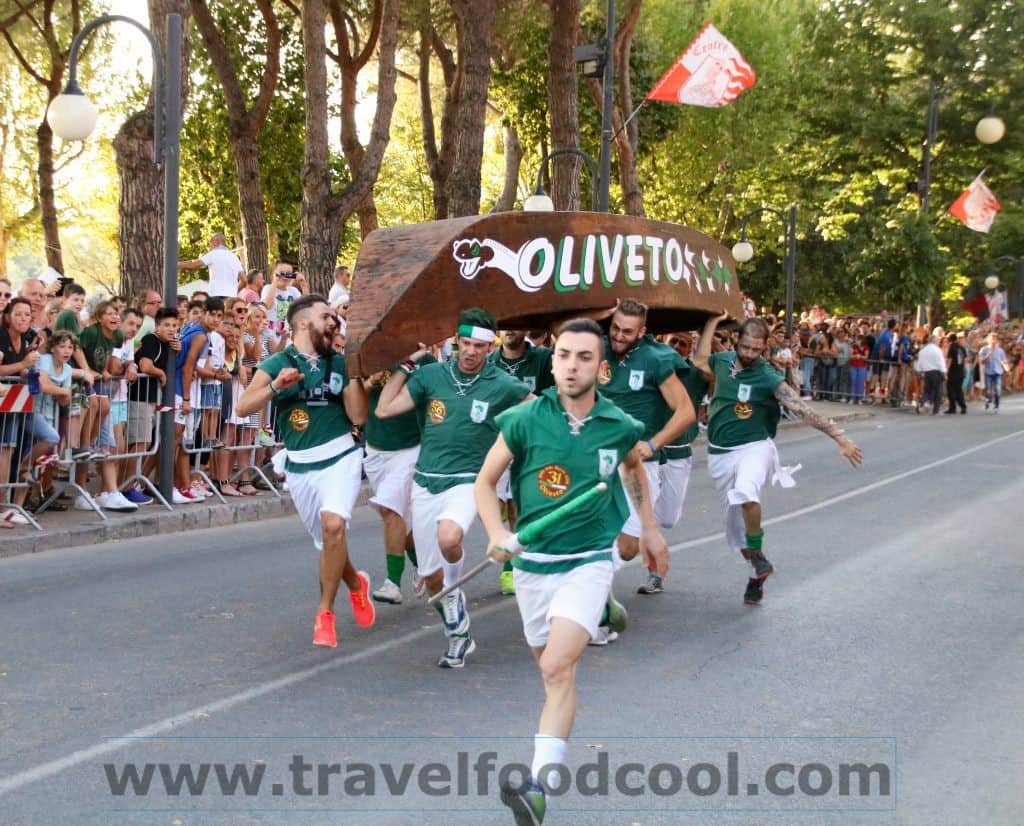
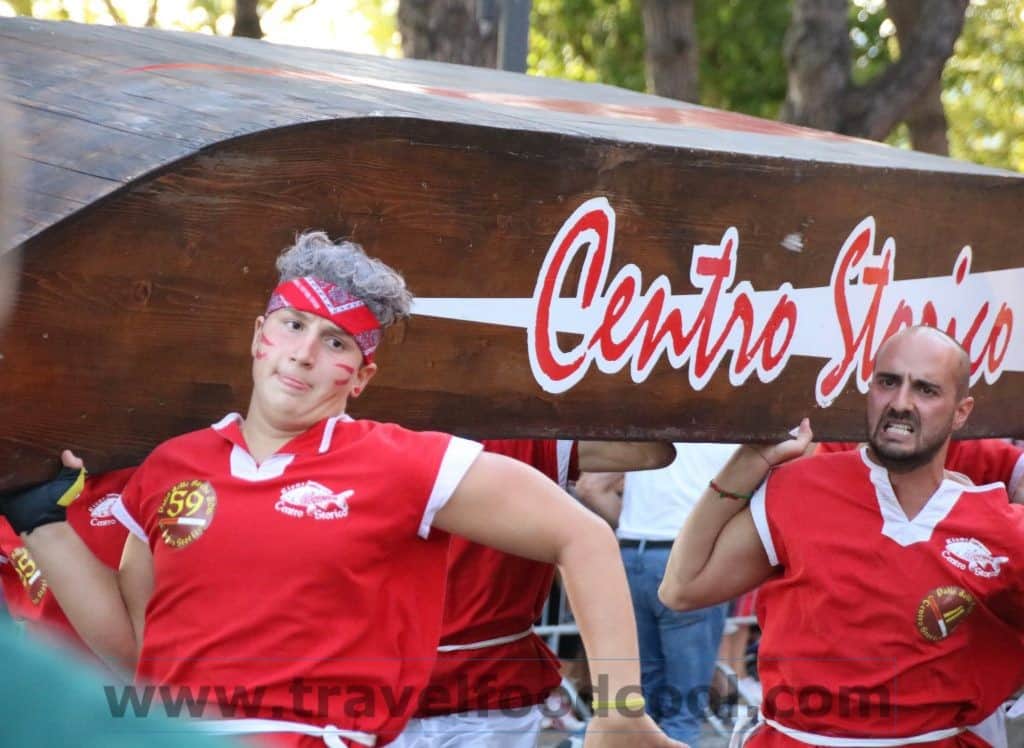
The boats have to go back to the pier where the flag bearer is waiting. The flag bearer takes off again, running back to the original boat waiting in the lake.
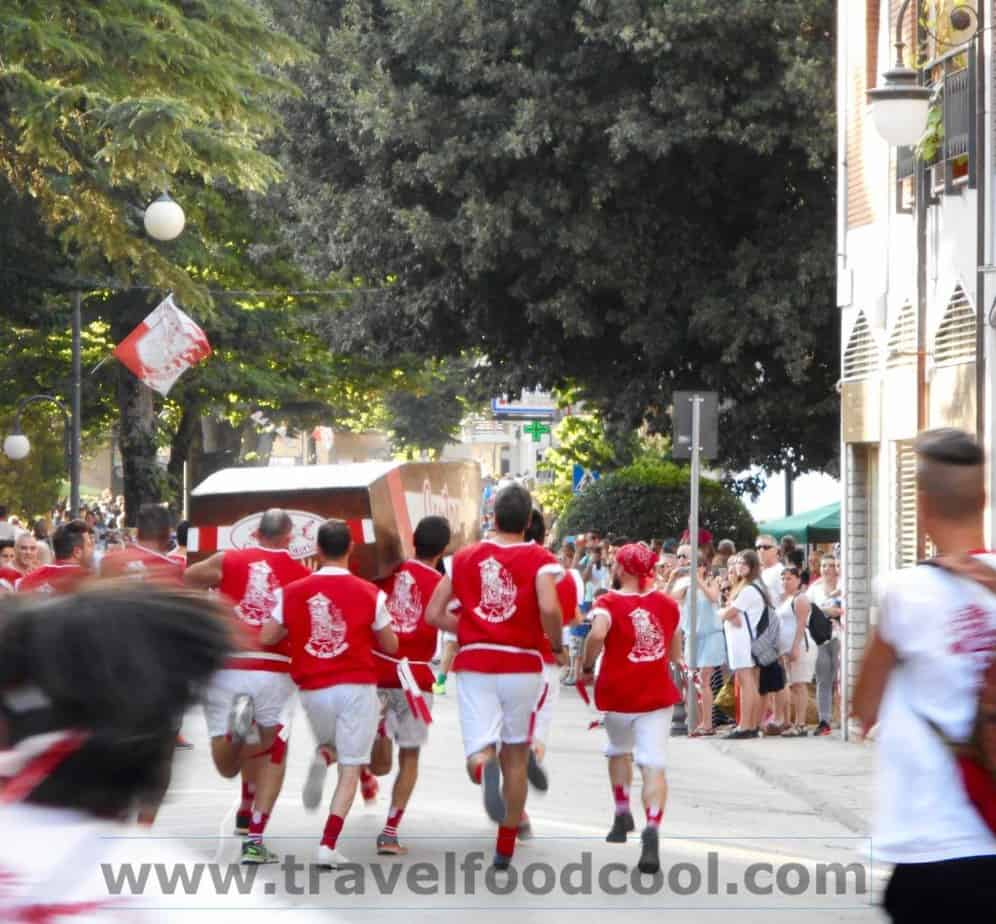
After the flag bearer has leapt into the boat, the rowers stroke furiously through the water to another point on the shore (white route on map). The third and final stage of the Palio is completed when the flag bearer again leaps from the boat and runs, with their Rione flag, to the shore to plant their flag in a large pot. The winning team is that which completes the three stages first and is the first to sink their flag.
There is great rejoicing! Members of the Rione swarm into the water to celebrate. Smoke matching the winning Rione’s colours is set off.
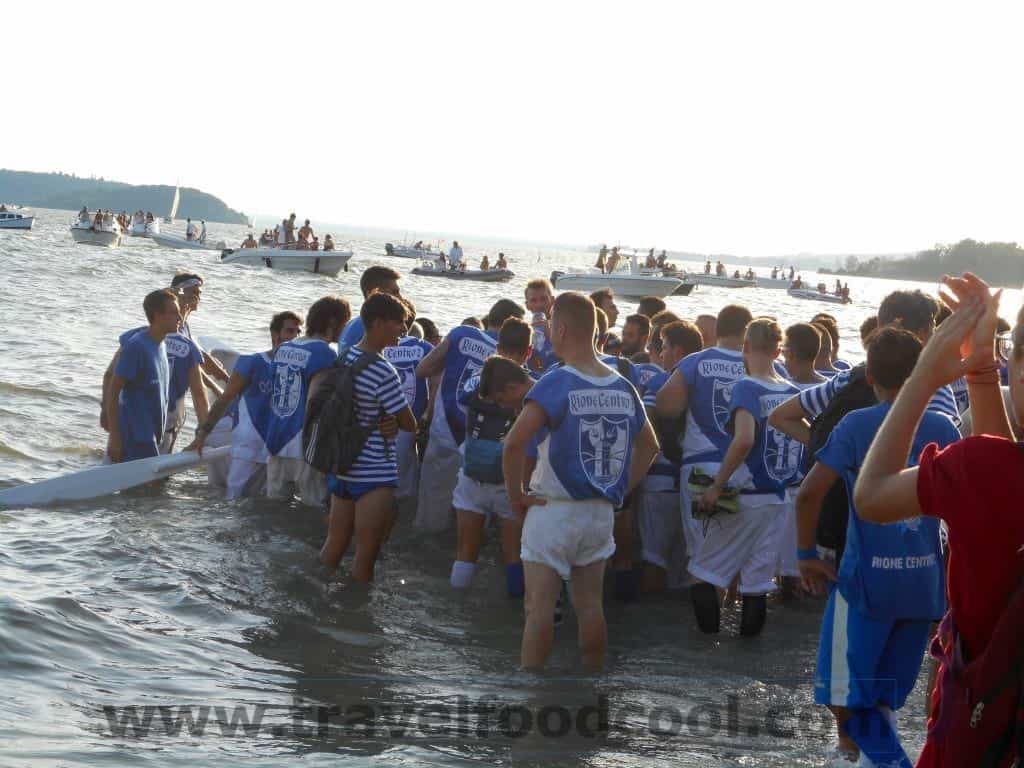
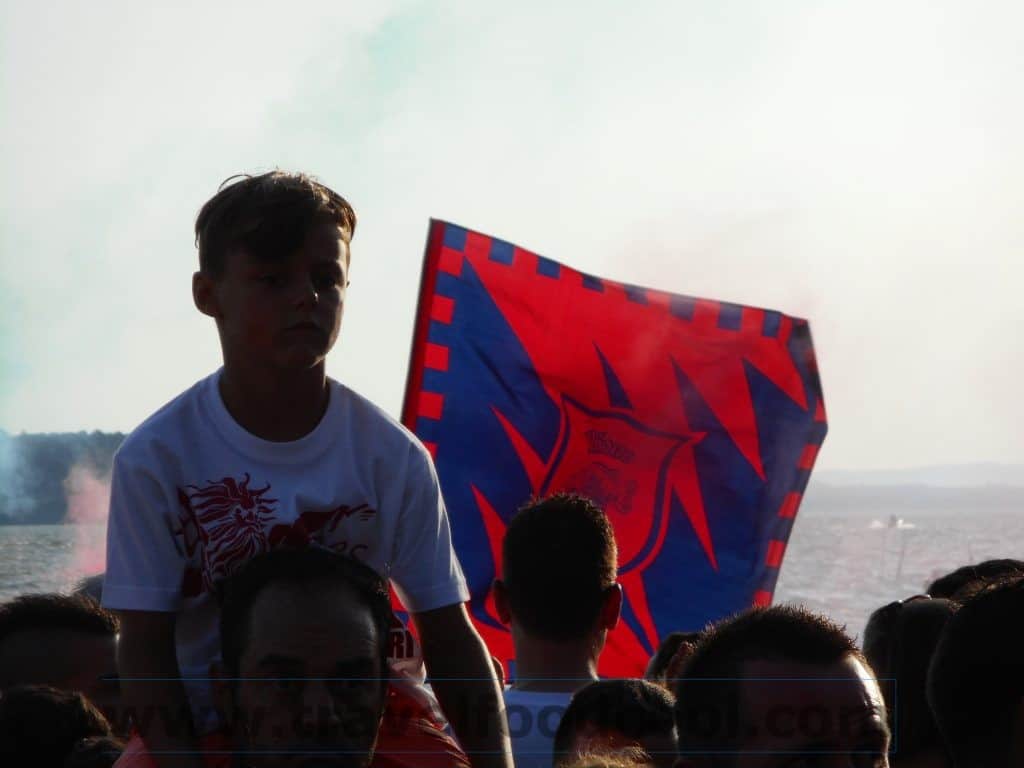
That night, there are flag throwing demonstrations, an award ceremony and fireworks.





















